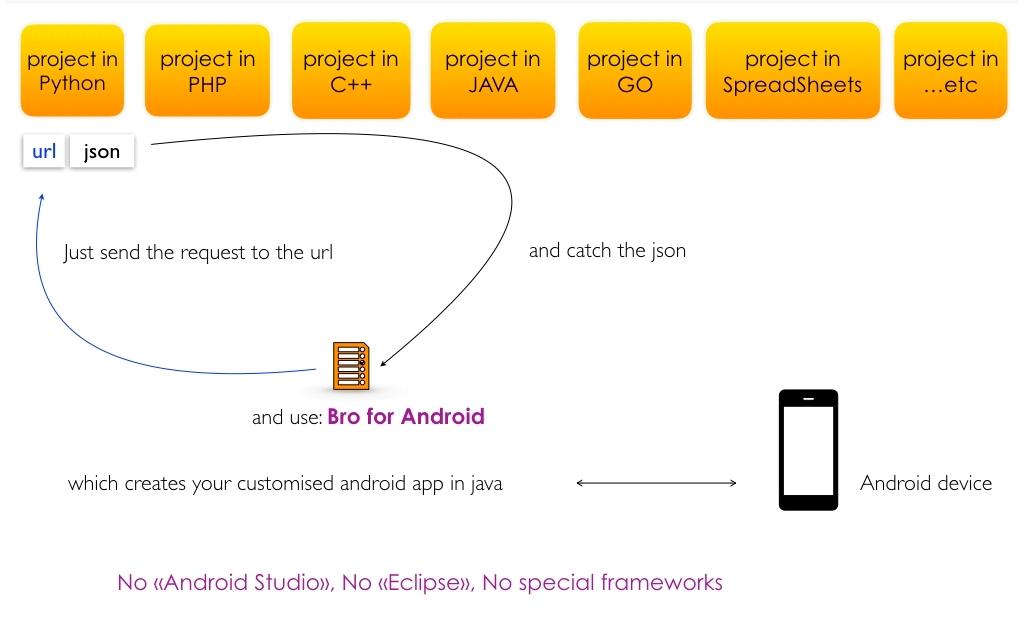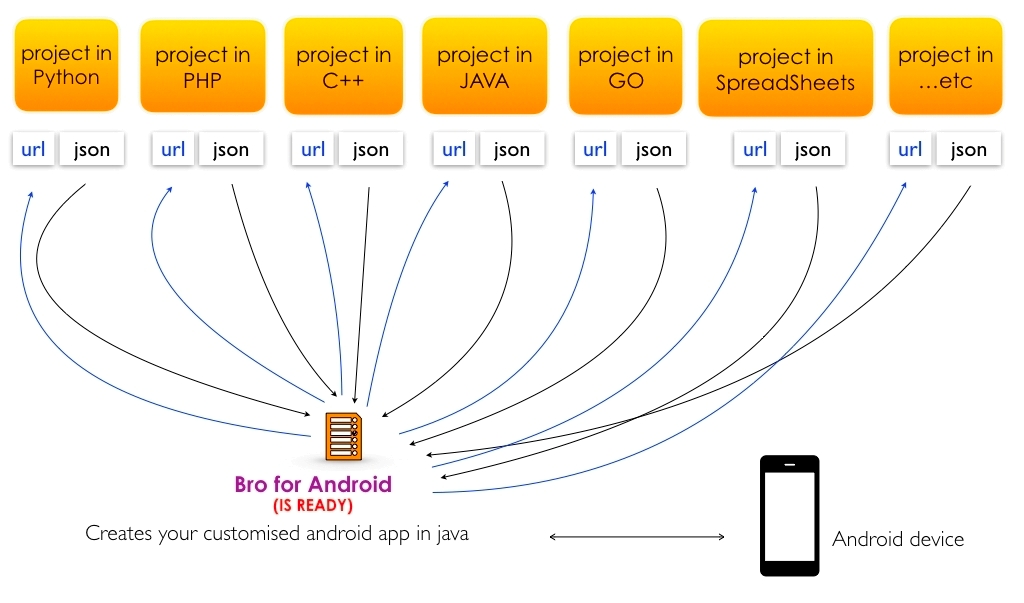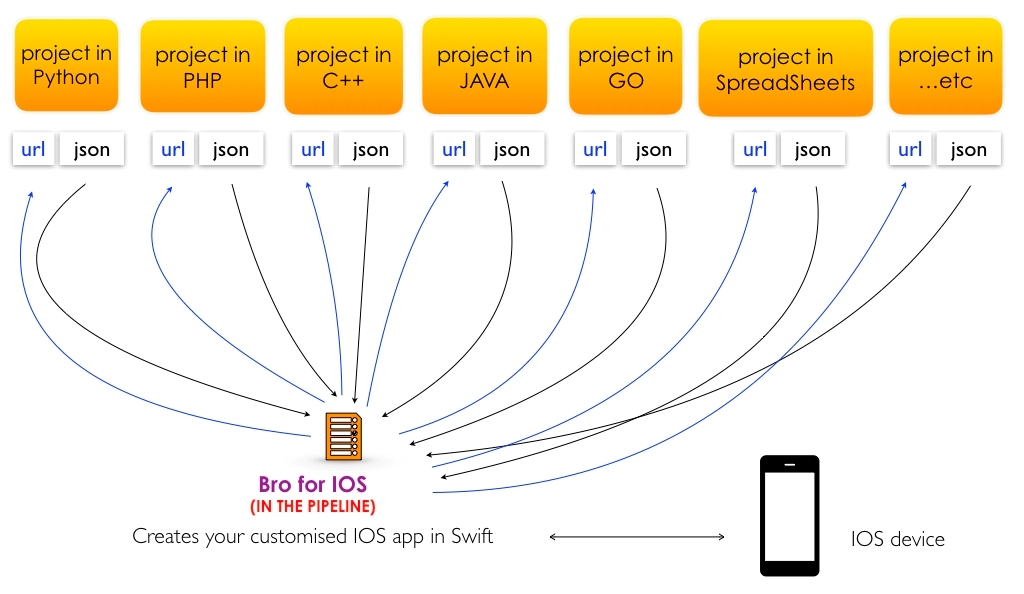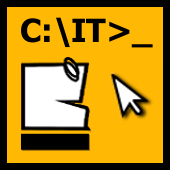THE BROWSER FOR NATIVE APPS FUNCTIONALITY, which
The browser for native apps functionality
1. Creates native mobile apps by accessing the URL’s.
Just like the usual browser creates web-page by the URL. The usual browser creates a web page by referring to the URL, but this one immediately creates a valid program.
2. Allows different native apps to exchange functionality by exchanging links.
By sending network request to the URL, any native app can get other app’s functionality. And each exchanged functionality communicates with it’s own backend. Programs as music. Just as we listen to music on YouTube without downloading it, we can also get the functionality of another program without getting it's code.
3. API’s are no longer required.
Open the access to the already written piece of your program which you want to share, let your counterparties download «Expert Bro» and tell them the URL they need to use.
4. Web-sites are no longer required as well.
Anything is possible.
Case 1: Write apps where you want
If You have any project in any language on any platform, and you want to develop a native Android application for it.

Single way for all of them

Single way for IOS (and for other OS)

Case 2: API which does not exist, but does function
If Your Program doesn’t have an API, but it’s needed, you’re free to not make one, but get the result.
1. Open the access to the already written piece of your program which you want to share.
2. Let your counterparties download the «Expert Bro» and tell them the link they need to use.
Because «Expert Bro» allows different native apps to exchange links, any native app can get other app’s functionality by sending a network request to the URL, and each exchanged functionality communicates with it's own backend.
Thus there is no need for traditional API.
3. Enjoy
- No more immense amount of APIs.
- Nobody needs to study each API they need to use.
- Nobody needs to learn all the data structures and how to interact with them.
- Nobody needs to create their own API and maintain it.
- No more "bottlenecks" due to manually set up connections by expensive and qualified human resources.
Case 3: The way to convert already existing website into the working native app
(in the pipeline, on the last stage)
For that you will need the special "bro’string" that is either placed inside the html of the website, or stored within the "Expert Bro" itself. With this string any webpage can be converted to the fragment of the native application. No javascript is needed at all.
Case 4: Possibility for different messengers to send messages to each other just as email Clients do
While using e-mail, we do not think about what kind of email Client our recipient has. We just send our letters from «gmail» to «yahoo» or «outlook.com» and vice versa. But it doesn’t apply to messengers. Messages of WhatsApp, Telegram, Viber, etc. can’t be sent to each other. It is said that once upon a time it was the same with e-mail (archaeologists discovered such a thing).
"Expert Bro" is the solution. Want to see? You can. Now messengers only need to exchange links and that’s all. Even their owner’s unwillingness to do so can’t prevent it, because there are no technical obstacles to do this on one’s own. "Expert Bro" easily connects their api except when messengers completely close them. But then, there will be a chance for other developers to capture the market, giving convenience to Users.
Case 5: Native apps which do not need to be installed on device, but they work on demand
(in the pipeline, on the last stage)
Since "Expert Bro" has the ability to launch an external native program, you can write a program that will be executed in the "Expert Bro", either on demand, or upon the occurrence of a specific event, or upon passing the coordinate on the map, etc.
For example, as soon as the Client enters the cafe, the menu with the option to order and to pay will on it’s own appear on the Client’s smartphone, and when he leaves, it will disappear. When the Visitor enters the bank, the banking application will launch, and when the Visitor leaves, it will disappear. Etc.,...
Such "on demand" temporary applications also could replace cash desks in stores. When customers enter the store, the "on demand app" for payment will appear on their smartphone on it’s own, so customers will be able make the payment with the help of his smartphone and exit from the store by the QR-code or by the RFID-tag. And when customers leave, this application disappears from smartphones on it’s own.
For the same reason self-service cash terminals, such as, for example, in "McDonald’s", etc., will be unnecessary as well.
Such native on demand apps are convenient, because you do not need to persuade anyone to download the program. Barely anyone wants to install the 101st application on the device.












